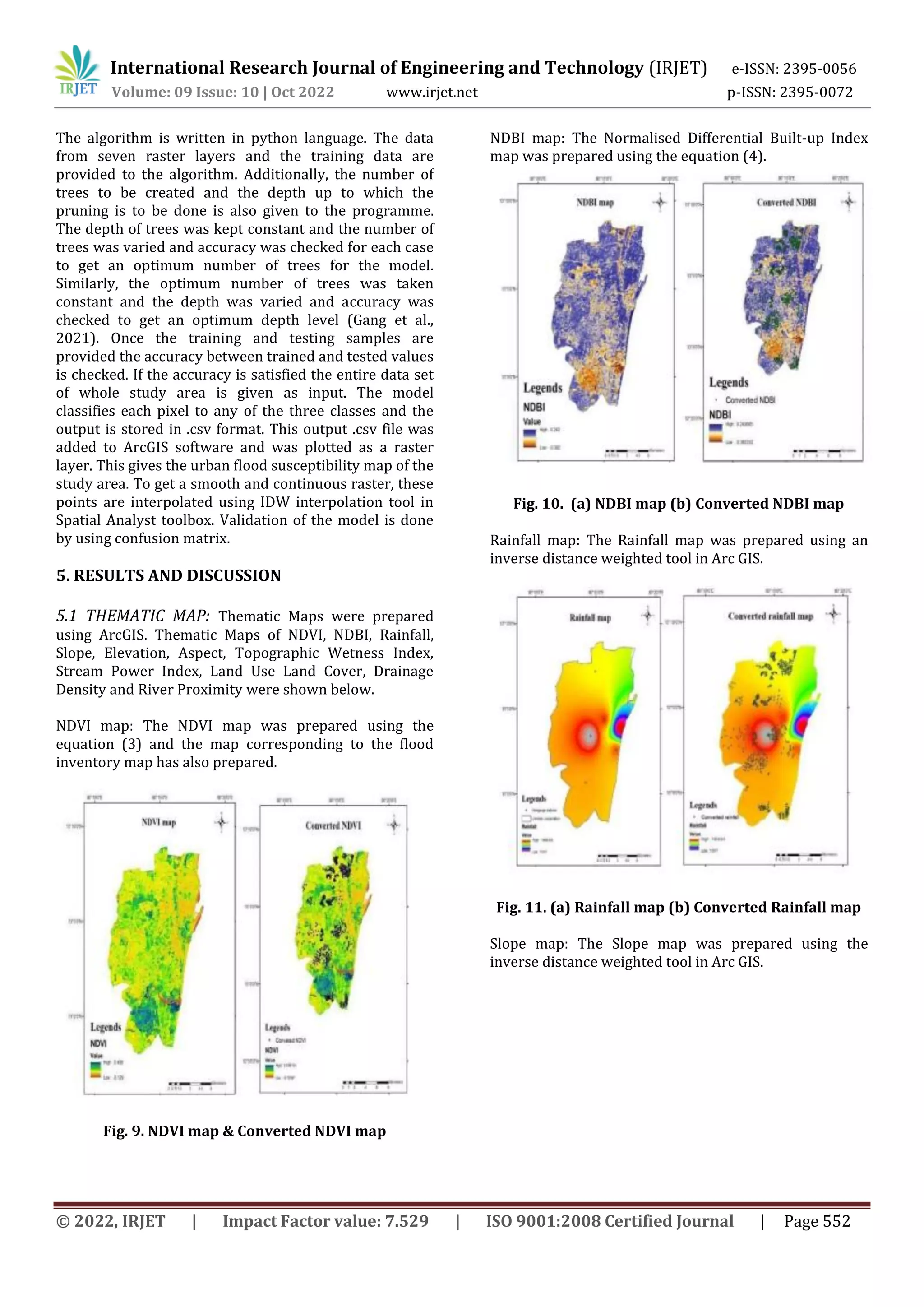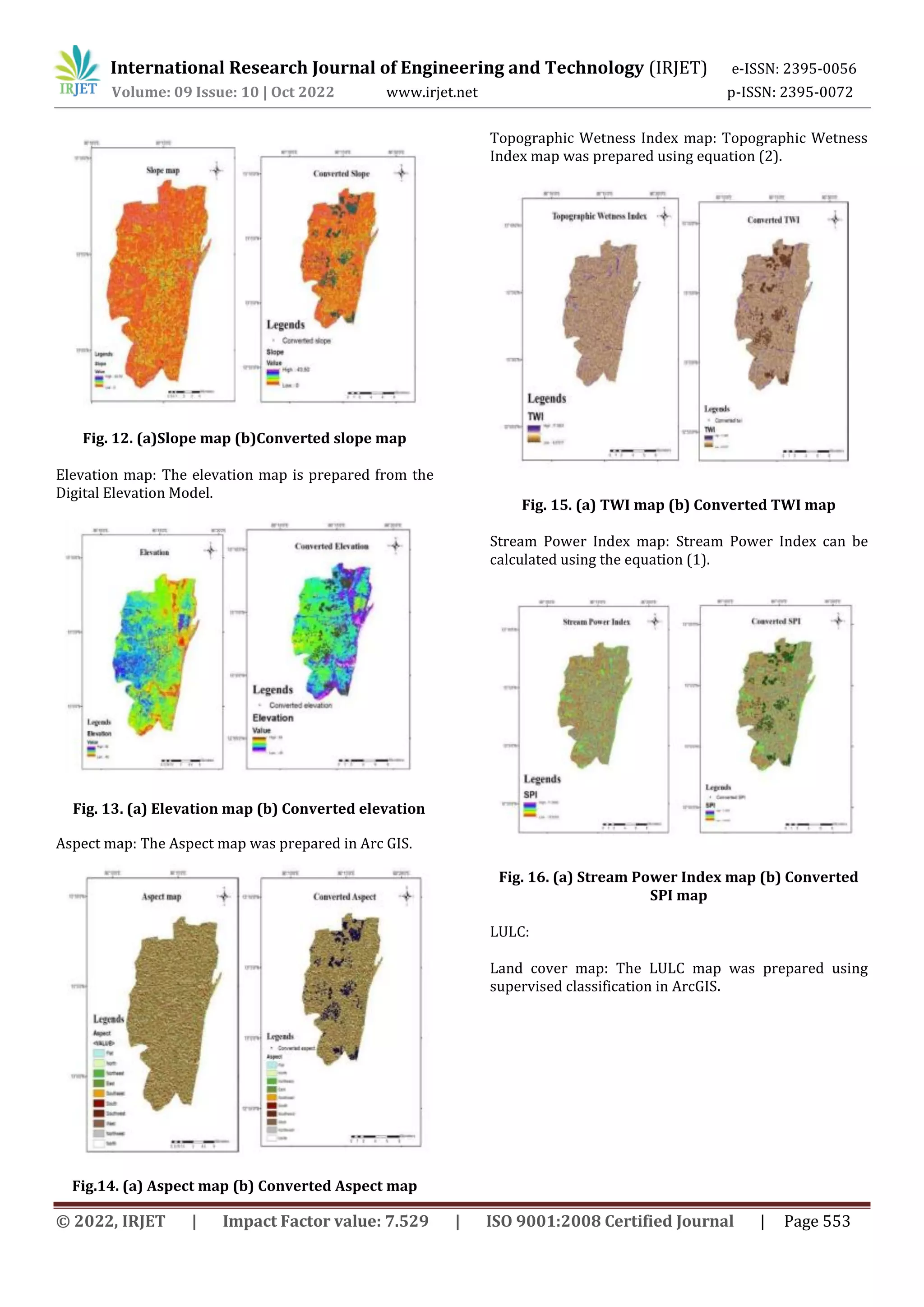This document summarizes a study that created an urban flood susceptibility map of Chennai, India using GIS and the random forest machine learning method. Eleven factors like elevation, land use, rainfall, and distance from rivers were used as inputs to the random forest model. 300 historic flood locations and 300 non-flood locations were collected and used to train and test the model. The random forest model achieved 95.5% accuracy in predicting flood locations. The output was used to classify the study area into low and high flood susceptibility zones to assist with flood management and mitigation.












